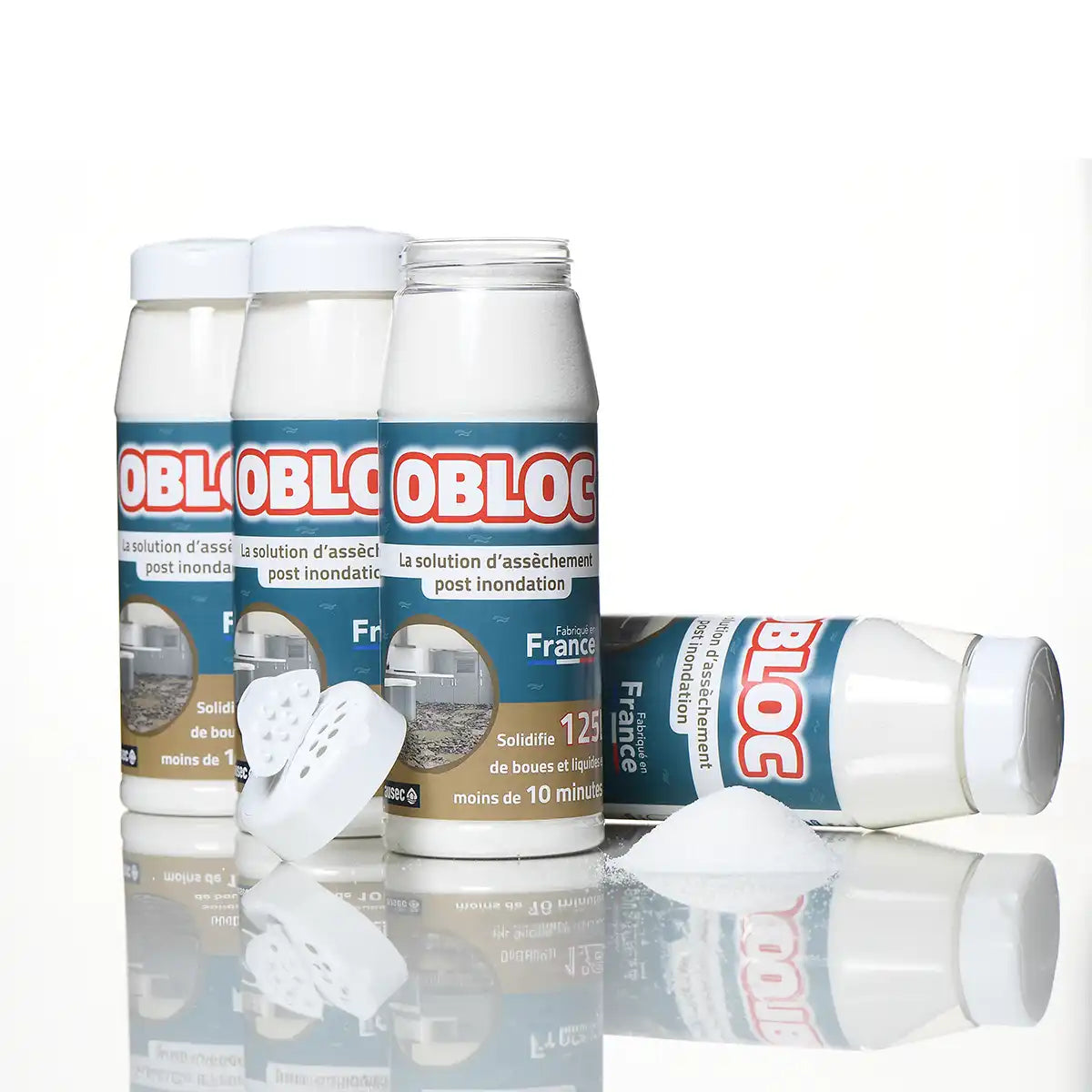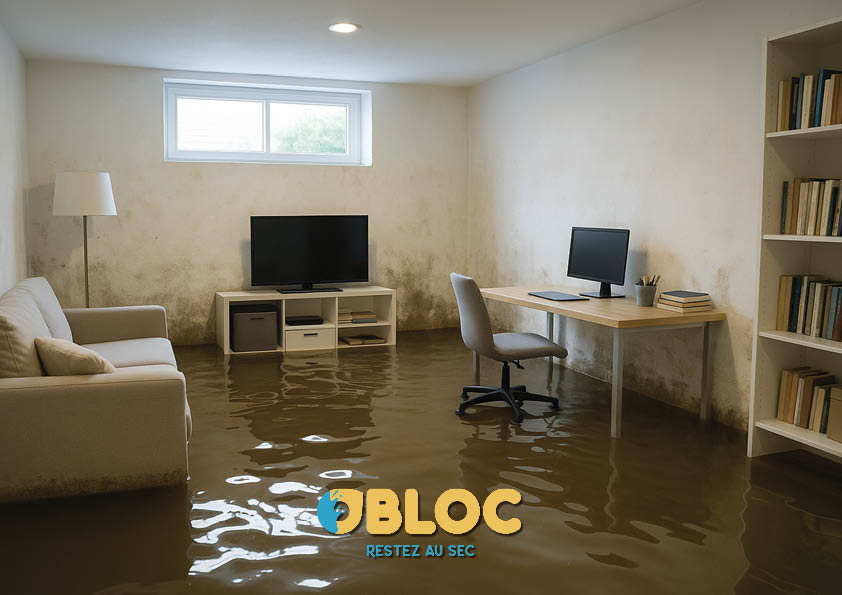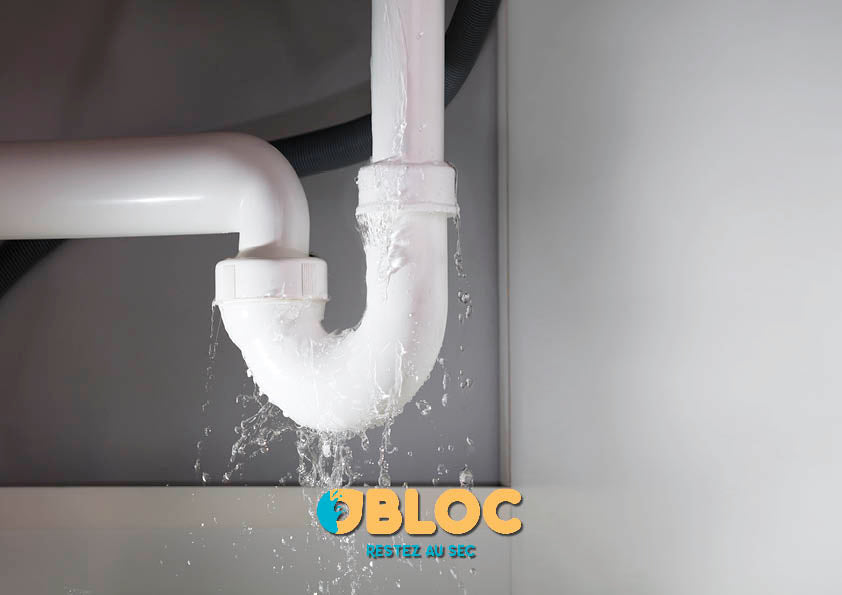When your basement fills with water, panic reigns. The situation can occur following heavy rain, a violent storm, melting snow, or even a simple rise in the water table. In a house or apartment, this sudden flooding quickly causes significant material damage, whether it's a flooded cellar or a flooded basement. What should you do when water seeps in through the walls or floors? How should you react, and especially how can you prevent another episode? In this article, we answer all the questions that individuals, homeowners, or property managers have.
Understanding the Causes of Basement Flooding
Water accumulating in a basement or cellar isn't always caused by a clogged drain. Very often, the problem is related to the nature of the soil itself: silty or clay soils, for example, retain moisture. If soil drainage is poorly designed or nonexistent, each prolonged rainfall can worsen the situation.
Poorly directed downspouts, the slope of the land, or the absence of a sump can also contribute to infiltration. The water then exerts constant pressure on the building's structure. This phenomenon, known as hydrostatic pressure, can force the liquid to pass through microcracks in the concrete or joints. Another common cause is the absence of a backflow preventer, which prevents wastewater from backing up through the pipes during river floods.
The situation becomes critical when ambient humidity becomes persistent. This promotes unpleasant odors, mold, and even respiratory problems. Understanding the origins of the problem is the first step in responding effectively.
Basement flooding: what to do?
How do I empty a flooded basement?
When water invades your basement, safety is the priority. The first step is to turn off the power, especially if equipment (freezer, heating system, lights) has been affected. If the level is high, a cellar pump or a sump pump is recommended. These devices allow water to be evacuated quickly, even when it reaches several dozen centimeters deep. In some cases, a infiltration well or drainage system can facilitate this evacuation to the outside.
If you don't have access to an electric pump, absorbent powders can be used to capture water and residual moisture, especially in the nooks and crannies of a basement or crawl space.
How to dry a basement after a flood?
Once the water has drained, it's essential to restore fresh, dry air to the room. To do this, ventilate as much as possible and then use a dehumidifier. These devices stabilize the ambient humidity at around 50-60% and prevent the growth of invisible mold. If the power is still out, solutions like absorbent bags or clay-based products can help.
It is also advisable to monitor electrical equipment, inspect the heating system, and not turn anything back on until an electrician has given their approval. The presence of persistent odors or black stains on the walls should alert you: the drying process is not yet sufficient.
Damp basement: what to do?
When a basement remains damp for several weeks after a flood, it is likely that the structure of the building or the land itself is the cause. It is recommended to have a professional diagnose the problem to determine the exact cause: is it the rising water table, the nature of the soil, or the slope of the land?
Some choose to install a perimeter drain around the house. Others prefer to rely on an infiltration well or the installation of an interior drain. These works provide lasting relief from water pressure. It is also possible to install a mechanical ventilation system to renew the air.
Redirecting downspouts, repairing cracked joints, reinforcing walls with a waterproofing membrane: every detail counts. All this adds up to a healthy basement, free from odors and health risks.
What to avoid
Many people want to act quickly after a flood, but certain mistakes can make the situation worse. Never restart your equipment without first inspecting it. Don't immediately throw away damaged items: your insurance company will need proof (photos, videos, receipts) to assess the damage. And above all, don't just ventilate: moisture can remain trapped in the walls or floor for several weeks.
Concrete and accessible solutions
Today, there are simple and effective ways to protect your cellar or basement from further flooding. These solutions include OBLOC® flood bags, which expand upon contact with water, or protective draught excluders that can be placed around doors or vents. These products require no electricity, activate quickly, and are easy to store in a garage or cellar.
But these solutions must complement preventive measures: remaining attentive to Météo-France alerts, regularly checking the condition of the land and outdoor equipment.
Protecting your home means taking action now
A flooded basement is much more than a temporary inconvenience. It's a warning sign that must be taken seriously. By identifying the causes, taking prompt action, and equipping yourself with the right tools, it's entirely possible to limit material damage and protect the health of the occupants. Whether you're a homeowner, tenant, or property manager, you can take action today to make this space safe, dry, and sustainable.





Leave a comment
This site is protected by hCaptcha and the hCaptcha Privacy Policy and Terms of Service apply.